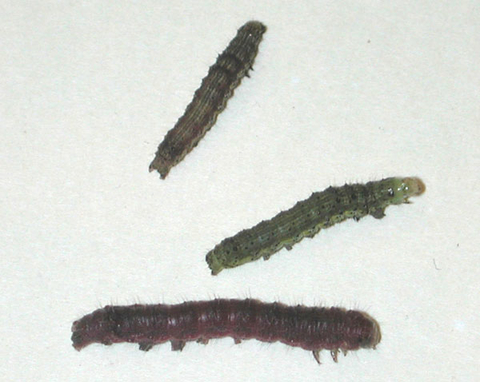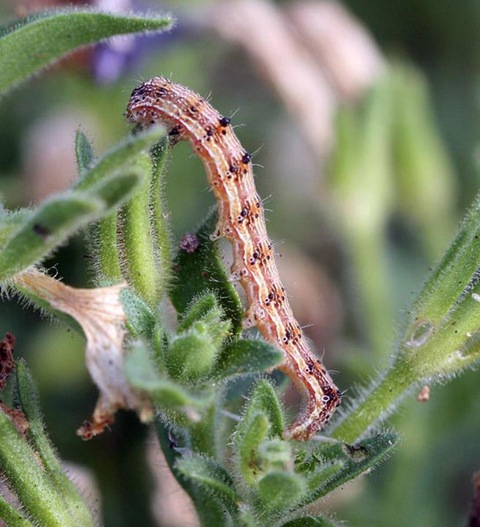Quick facts about tobacco budworms
Tobacco budworms (Heliothis virescens), also known as the geranium budworm, are commonly found on petunias, geraniums and nicotiana. They can sometimes damage roses and other plants.
- These caterpillars are seen in late summer.
- They cause irregular or round holes in flower buds.
How to identify tobacco budworms
- The caterpillar has white stripes running lengthwise along the abdomen.
- It has numerous erect hairs on its body.
- These caterpillars are commonly brown but can also be red, purple or green depending on what they are eating.
- It can grow to be as large as 1 3/4 inches in length.
Life cycle
Tobacco budworms do not survive the harsh winters in Minnesota. They arrive in Minnesota during late summer by riding on air currents from the south. They may be seen one year but whether they will be seen the next year cannot be predicted.
How to protect your plants from tobacco budworms
You cannot prevent the appearance of this caterpillar, but you could take some steps to control it.
- Check your flowers regularly. Handpick and destroy any caterpillars you find.
- If you have a large number of susceptible flowers (of interest to the caterpillars) in your garden, you could spray a residual garden insecticide, such as bifenthrin, esfenvalerate or permethrin.
Bacillus thuringiensis, is effective on caterpillars, but does NOT work well against tobacco budworms. The tobacco budworm does not consume enough of this pesticide when it is chewing into the buds.
Reviewed in 2018



